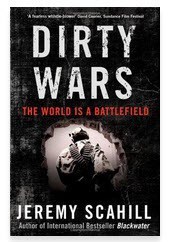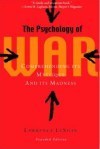R.Z. Halleson's Blog, page 5
March 1, 2015
Almost There….

December 1, 2014
Midnight Thoughts
I think that you are not alone in your feelings. I am re-blogging this post to http://halleson.net. I also forwarded a link to my grandson who is pretty much in the same situation that you are.
 Originally posted on alostyoungmind:
Originally posted on alostyoungmind:
Earlier today while I was at work, listlessly cleaning up the used dishes of my dining room patrons, a thought struck me like a bolt of lightning…I was not happy with where my life is. And yes you could make the argument that I am still young, a spry 19 years young, and I literally have the rest of my life ahead of me but remember….I”M 19! Nothing moves fast enough for me simple because I want to rest of my life to start now. Why? Why!
Why does everything have to happen at high speeds for young people like me? I think it’s because of fear. Fear of an unknown future and ,most importantly, failure are in my opinion the driving force behind the social advancement of my generation. I believe that since we have been in school we have had the fear of failure drilled into us. With…
View original 576 more words

November 26, 2014
Angry Teens
 I am a mother and grandmother from Norwegian-American ethnicity with green eyes and graying hair. I worked for most of my life, and have lived among numerous other ethnic groups, some where I felt like I was, in some way, a part of them and some not. I’ve seen and experienced many things and have had profound losses throughout my life. It is from that background that I write this. I am not a psychologist, but this needs to be said and considered.
I am a mother and grandmother from Norwegian-American ethnicity with green eyes and graying hair. I worked for most of my life, and have lived among numerous other ethnic groups, some where I felt like I was, in some way, a part of them and some not. I’ve seen and experienced many things and have had profound losses throughout my life. It is from that background that I write this. I am not a psychologist, but this needs to be said and considered.
Angry children who don’t receive help may grow into angry teenagers. The anger builds, gets suppressed, buries itself inside where it builds some more. The child has no idea how to handle it. The reasons for the anger and for the deep sorrow that accompanies it may be obscure even where general problems that may or may not be related can be determined. Other children in the same community may experience similar obvious problems and yet don’t grow up to be filled with a rage so overwhelming that it ultimately becomes self-destructive to the teen and those around him.
One day a close friend asked her teenage son for help in lifting some heavy cartons. To her surprise, he exploded and rammed his fist into the living room wall so hard that it left a dent. They looked at each other in shock. “I think you need help…,” was all she could think of to say.
“So get me some,” he answered, and stalked out of the room. She told me that this incident was a wake-up call to recognize how badly her troubled marriage was affecting her children. Fortunately, she recognized it in time before her sons grew up and left home. She still had time to get all of them into family counselling and get the healing and self-insights started.
Most of us are aware that children go through stages as they grow. Babies roll  over, toddlers walk away when you call them, preschoolers surprise us with how quickly they learn language, and grade- and middle-schoolers test boundaries counting on parents to reign them in if they go too far. All of this is normal behavior, and wise parents provide a structured home environment that allows their children to proceed through these stages of development with the least amount of conflict that might challenge their self-esteem. http://bit.ly/1CppVqF
over, toddlers walk away when you call them, preschoolers surprise us with how quickly they learn language, and grade- and middle-schoolers test boundaries counting on parents to reign them in if they go too far. All of this is normal behavior, and wise parents provide a structured home environment that allows their children to proceed through these stages of development with the least amount of conflict that might challenge their self-esteem. http://bit.ly/1CppVqF
Watching and helping my own children get through their adolescent years was difficult and scary. It was like their brains had been scrambled and whatever good judgement they’d had previously went out the window. I was astounded at the pranks and situations that they and their friends got themselves into. When I discovered that marijuana had entered the picture, it became clear that nothing that I said or did would persuade them to stop, so I took a different approach. I emphasized “truth-telling” above all else. I managed to recognize the signs of when they had been smoking, so they couldn’t lie to me and get away with it. When I asked, and they admitted it, I merely said that I was sorry that they hadn’t given it up yet.
What scared me most was if they might get themselves into some trouble that would involve the police. Groups of adolescent young men walking or standing together on the sidewalk seem threatening to many people, and suspicious to the police. I warned my teens again and again that if the police stopped them, that they should cooperate. Do not fight back. Do not lip-off. Do not challenge them. The one thing to understand about the police is that they are trained to be in control of all situations in which they find themselves. Let me emphasize:
Police enforce the law.
Police keep order in society.
Police are mandated to control.
This is their job. We need them to do their job and do it well.
And so we have an angry child/adolescent who commits an act of defiance. He  takes something from a convenience store and walks off without paying for it. He probably couldn’t tell you why he did it. He may not even have wanted the item, but he grabbed it because he was mad, and the item was right there, right under his hand. He walks away not knowing that the store manager has called the police and that the description of him was specific. A police car rolls up, challenges him, and now he’s scared. Scared and angry. Enough. He’s had enough. He’s not going to take it anymore. He has felt put-down all day, all week. (Remember that kids this age don’t think much about the future. Their life is in the now.) Anger boils into rage. This time, he’s not running. This time, he’s not hiding. Impulsively, he turns toward the policeman. And so we have an unstoppable force (a rage-filled adolescent) hitting an immovable object (a policeman who must be in control as he enforces the law), and the result can only end in tragedy. http://bit.ly/12cfOVd
takes something from a convenience store and walks off without paying for it. He probably couldn’t tell you why he did it. He may not even have wanted the item, but he grabbed it because he was mad, and the item was right there, right under his hand. He walks away not knowing that the store manager has called the police and that the description of him was specific. A police car rolls up, challenges him, and now he’s scared. Scared and angry. Enough. He’s had enough. He’s not going to take it anymore. He has felt put-down all day, all week. (Remember that kids this age don’t think much about the future. Their life is in the now.) Anger boils into rage. This time, he’s not running. This time, he’s not hiding. Impulsively, he turns toward the policeman. And so we have an unstoppable force (a rage-filled adolescent) hitting an immovable object (a policeman who must be in control as he enforces the law), and the result can only end in tragedy. http://bit.ly/12cfOVd
Angry children and teens live in every community, in every culture, in every country. Why these kids develop chronic anger may be different with each child. Sometimes parents can surmise the cause in their own child, but many times parents, especially those who are struggling themselves, may not even be aware of their child’s anger and certainly not of how deeply entrenched it has become. Teenagers are in the “separation” stage of growth and development where they are trying to become individuals separate and apart from parents, and so they don’t tell their parents what they are thinking or doing. This is a normal part of growing up, but troublesome in a teen who has become chronically angry and whose anger is escalating.
 Adolescence, that period between childhood and maturity, has no age-clear boundaries. Some believe that adolescence lasts well into the twenties and maybe even until thirty before the brain matures into its adult state. Adolescents are impressionable, and when their guard is down, they can be manipulated. Why do you suppose it’s so easy to recruit young people, boys mainly but girls also, to join terrorist groups such as Al Queda, ISIS, or radical militias and Skinheads. Once recruited and brainwashed, these children may be strapped with bombs and sent out to kill. Most parents don’t see it coming….
Adolescence, that period between childhood and maturity, has no age-clear boundaries. Some believe that adolescence lasts well into the twenties and maybe even until thirty before the brain matures into its adult state. Adolescents are impressionable, and when their guard is down, they can be manipulated. Why do you suppose it’s so easy to recruit young people, boys mainly but girls also, to join terrorist groups such as Al Queda, ISIS, or radical militias and Skinheads. Once recruited and brainwashed, these children may be strapped with bombs and sent out to kill. Most parents don’t see it coming….
With all the other problems that we are dealing with on this planet, let’s add one more. Let’s begin to take a look at the role that adolescents play in how the world works. For example, it is they who fill the ranks of so many protests. With minimal ability to look forward to the consequences of their actions, they dive in to try and address grievances. Protests are usually a last resort for people who need societal change and who feel that all other avenues have been closed to them. Peaceful protests may be noted by the world, but far too often protests must turn violent before change will actually come about. The question becomes, how do we protect our teenagers and our twenty-somethings from harm, from getting into situations that they can’t get out of, from getting hurt or from hurting others. That is the question.
It’s time we start giving our adolescent children and their precarious stage in life the attention that is so sorely needed.
Please leave a comment and let me know if you agree.
Thanks.
R.Z. Halleson
Filed under: Stories from a Life Long Lived, Today's World Tagged: act of defiance, adolescence, ages and stages, al Queda, anger, child growth and development, family counselling, Ferguson, Halleson, immovable object, ISIS, larger picture, Michael Brown, militias, parenting, police control, police enforcement, protests, rage, Skinheads, teenagers, unstoppable force

October 31, 2014
Taking Back our Country
 This book, Dirty Wars, sat on my shelf for a few months before I decided to read it partly because it is almost two inches thick and a bit intimidating. But since I will soon be hearing the author speak at the Chicago area’s North Shore Peace Initiative fund raiser, I thought it might be helpful to have read the book first.
This book, Dirty Wars, sat on my shelf for a few months before I decided to read it partly because it is almost two inches thick and a bit intimidating. But since I will soon be hearing the author speak at the Chicago area’s North Shore Peace Initiative fund raiser, I thought it might be helpful to have read the book first.
I was blown away by the information in this book. Really. As Americans, we need to know and understand what is happening to our country.
Author Jeremy Scahill has given us a gift in summarizing the United States’s role in international terrorist hunting from just before 9/11 up until 2013. It isn’t pretty. He makes it clear that we in America have a huge problem on our hands in that our nation’s leaders have gone amuck in their attempts to “protect” our country from terrorists, and in doing so have created a world far more dangerous than it has ever been before, this time on a global scale. We have leaders and high-level decision-makers who are narrow thinkers, who don’t do adequate homework before making binding pronouncements, who don’t seem to understand the consequences of their decisions, and when they get in trouble, are all too willing to go very very far in covering up their part in the chaos that they have created.
Readers who actually believe the hype that American media puts out will be shocked at what really goes on. The CIA and JSOC compete for opportunities to capture, torture, and kill suspected terrorists, many of whom are innocent, just folks like you and me going about their business, who through no fault of their own find themselves in the cross-hairs of government-sponsored murderers. Never heard of JSOC? Neither had I until I read Scahill’s book. JSOC is the acronym for Joint Special Operations Command, and is the unit set up to Find-Fix-Finish meaning to track a target, fix his location, and finish him off. Begun in the early 1980s, JSOC has evolved into an elite force that operates in many countries with virtually no oversight, so secretive that its activities are unknown even to congress, but may be called upon by the president for special tasks.
Bush-Cheney-Rumsfeld pushed our nation into illegal international activities, and Obama-Biden-Panetta not only continued these policies, but pushed them even further without understanding what they were doing in a long-term sense: creating a perpetual war with no end in sight. Power corrupts, yes. Egos cannot allow themselves to dented. Men with psychopathic tendencies rise to the top because they do not hesitate to step on those that get in their way.
How we as a nation bring ourselves back to honoring the rule of law and caring about the values that we believe we stand for won’t be easy, and it likely won’t be through elected leaders who say one thing, do another and then cover up actions with lies. If we are to become a beacon of hope for the world once again, as so many of us believe that we once were, we the people may have to find a way to do it ourselves.
Filed under: Book Reviews, Today's World Tagged: American media, dirty wars, elected leaders, Halleson, illegal international activities, jeremy scahill, Joint Special Operations Command, JSOC, North Shore Peace Initiative, power corrupts


September 24, 2014
Too Late! Too Late!
The winter of our lives comes unanticipated. Even if we feel some urgency to get something finished before winter comes, the first snowfall is always a surprise. We look out the window to observe it. We remark upon it. “Winter’s here,” we say.
My long-time friends (let’s call them Raul and Marge) have been working on the second volume of Raul’s memoirs for years. Progress has been slow. He cannot see any longer; his hair is thin and as white as the snow that covers the branches in winter. He depends on Marge to listen to him, and to type, as he tells his story. She is committed, and diligent, but she is becoming more and more forgetful.
Several years ago, when I realized that Marge was losing her ability to organize, I become concerned for their project. She had always been proficient in using the computer to write and to help edit the bits and pieces of Raul’s narrative. These fragments were in hundreds of separate files, sometimes poorly named, so that it would not be easy to put them in chronological order. More than that, she was having difficulty finding the folders in which the memoir files were stored. She called me often, sometimes daily, sometimes twice a day, to help her get into her email, to search for products on the Internet that she might want to order, and to help her find a file in which she and Raul needed to work.
For a couple of years, I was able to talk her through her computer-related perplexities on the telephone while going to visit only occasionally. Then on one visit to help with printer problems, I asked for permission to back up her files on a flash drive and store them on my own computer for safety. I had taught her how to back up the memoir files, but discovered that she wasn’t doing it, because she could no longer remember the sequence of the steps that she needed to do to accomplish the task. Yes, I had written everything down, and yes, I had led her through the sequence while she sat at the computer doing each step herself, and yes, I had asked her to write down the steps for herself in her own way, but even when I taped these instructions to her computer monitor, somehow they were dislodged, lost, and couldn’t be found.
With Raul’s permission, I sent a copy of all the files to Raul’s son who seemed to care about his father’s memoirs. The story, after all, was well written, and covered a period of time during the second world war that overlapped several countries and involved prominent well-known political and literary figures with whom Raul’s father had been acquainted. This seemed to be a memoir that might be historically important. Aside from the fact that Raul and Marge were close friends of mine, I cared because Raul’s recollections of his and his father’s lives during the late 1930s and throughout the 1940s very likely contained material not recorded anywhere else.
Two weeks ago, I visited Marge who now lives in the assisted living area of the nursing home where Raul is being cared for. I discovered that she is desperate to finish Raul’s memoirs before it’s too late, before he will not be able to work with her anymore to put everything in order and to write the ending. The time could be soon.
I also discovered that most of the files had disappeared from her computer. She had no idea what had happened. She had been trying to get Raul’s son to send her a print-out of all the files so that she and Raul could put them in order, but his son was not responding. He had myriad problems of his own (and it’s true; he seems to).
Was it too late? Would this be another case of what must be hundreds of thousands of valuable writings, for whatever reason, that would fail to enlighten the reading world in some way? Had Raul and Marge taken too long in writing his memoirs? Would they be unable to finish? Would this manuscript join the ranks of the unpublished?
Who was I to judge?
I told Marge that I had all the backup files and that I would print them out for her, so that she and Raul could write the ending to the manuscript and try to put all the files in a cohesive order. I had read enough of them to know that they had done a remarkable job of writing and editing the narrative.
The manuscript turned out to be a print-out more than four inches thick. I separated the files and stapled them, put them into a small rolling cart along with rubber bands and paper clips so that she could roll the work back and forth from Raul’s room in the nursing home section of the home in which they lived. They could try to work on it once again.
Is it too late? I don’t know, but it wasn’t for me to discourage them from trying as members of their family apparently were doing. People’s choices are their own, and if those choices seem to be good ones, they should be encouraged no matter the obstacles.
I thought of myself too. I’m not young anymore. In fact, to many of my readers, I probably seem ancient. My writings don’t have the urgency that Raul’s story has, so if I don’t finish anything, it’s not a big deal to anyone except me and my desires to get a message out there to anyone who might pay attention. Someday, it will be too late for me too, but until then, I will keep trying.
Filed under: Uncategorized


July 10, 2014
HERE is the Answer. Follow me.
The pervasiveness of attempts at mind control is so everywhere present in today’s world that we almost take it for granted. It has become a part of who we are as human beings to convince others to believe as we do, to buy into our opinions, and to spend money for the products that we want to sell, whether or not it is for our own well being.
While researching my next story about cults for the God’s Child series of novels, I have become immersed in studying the topic of mass movements, fundamentalism, the so-called cosmic war, zealotry (fanaticism to the point of self-sacrifice), and the reasons that anyone would fall prey to these mind-altering and even mind-stealing groups. I have had personal experience with cults and mass movements in the past giving me more than just a theoretical framework to approach this study. Only in the past few years do I believe that I rid myself of the last vestiges of allowing anyone to influence my thinking to the point where I am in danger of losing my own healthy skepticism. It hasn’t been an easy journey.
The Bibliography: I won’t claim to be an expert, but I hope to share the information that I am gleaning in my reading, and sharing some of the insights of the many who have gone before me in their own concern about the ease with which our minds can fall prey to those who would manipulate them for their own agendas. In my current study, these are the books that I have read so far:
 Strong Religion, The Rise of Fundamentalisms arodund the World, (2003) by Gabriel A. Almond, R. Scott Appleby, and Emmanuel Sivan; This report draws on a ten-year interdisciplinary study called The Fundamentalism Project. Strong Religion was my first and most influential attempt to understand my own experiences inside a cult. This is not an easy book to read as it is not written for the popular reader but for the academic community. Nevertheless, you might want to make this a foundation of your own studies on the topic as I have.
Strong Religion, The Rise of Fundamentalisms arodund the World, (2003) by Gabriel A. Almond, R. Scott Appleby, and Emmanuel Sivan; This report draws on a ten-year interdisciplinary study called The Fundamentalism Project. Strong Religion was my first and most influential attempt to understand my own experiences inside a cult. This is not an easy book to read as it is not written for the popular reader but for the academic community. Nevertheless, you might want to make this a foundation of your own studies on the topic as I have.
 Snapping, (1978) by Flo Conway and Jim Seigelman. This amazing book has been updated to a 1995 edition, so it is still a bit dated, but it is yet the most clear explanation of what happens inside the mind of a person who undergoes sudden personality change and falls prey to mind control.
Snapping, (1978) by Flo Conway and Jim Seigelman. This amazing book has been updated to a 1995 edition, so it is still a bit dated, but it is yet the most clear explanation of what happens inside the mind of a person who undergoes sudden personality change and falls prey to mind control.
 American Theocracy, the Peril and Politics of Radical Religion, Oil, and Borrowed Money in the 21st Century , (2006) by Kevin Phillips. Of special note is Phillips’ history of how the fundamentalist way of thinking began in the United States and how it spread and grew to what it has become today.
American Theocracy, the Peril and Politics of Radical Religion, Oil, and Borrowed Money in the 21st Century , (2006) by Kevin Phillips. Of special note is Phillips’ history of how the fundamentalist way of thinking began in the United States and how it spread and grew to what it has become today.
 The True Believer, (1951) by Eric Hoffer. This brilliant and self-educated author brings profound observations and insights into the minds of fanatics and how people become zealots (fanatics).
The True Believer, (1951) by Eric Hoffer. This brilliant and self-educated author brings profound observations and insights into the minds of fanatics and how people become zealots (fanatics).
Understanding Mysticism, (1980) edited by Richard Woods. This book is out of print and available only through used-book sellers. I read it a long time ago and remember being fascinated by it. However, I suspect that much of the thinking in these essays is outdated because scientific techniques for studying processes in the brain are growing more sophisticated all the time. I mention it only as a historical reference of how people tried to understand the once mysterious mysticism.
 Zealot, The Life and Times of Jesus of Nazareth, (2013) by Reza Aslan. A book that should be read by anyone interested in the historical origin and growth of Christianity. It is not what you think. If you are a “true believer,” read it at your peril. It may open your mind.
Zealot, The Life and Times of Jesus of Nazareth, (2013) by Reza Aslan. A book that should be read by anyone interested in the historical origin and growth of Christianity. It is not what you think. If you are a “true believer,” read it at your peril. It may open your mind.
 Kingdom Coming, The Rise of Christian Nationalism, (2007) by Michelle Goldberg. An indispensable guide to what is happening in America today. Goldberg names names, not only of people, but of organizations and how they are conspiring to change the the face of American culture and politics. Example: The most effective technique of influencing the United States government is to get elected at the local level and move on up to national office.
Kingdom Coming, The Rise of Christian Nationalism, (2007) by Michelle Goldberg. An indispensable guide to what is happening in America today. Goldberg names names, not only of people, but of organizations and how they are conspiring to change the the face of American culture and politics. Example: The most effective technique of influencing the United States government is to get elected at the local level and move on up to national office.
“. . .Dominion theology. . . asserts that, in preparation for the second coming of Christ, godly men have the responsibility to take over every aspect of society.” If you read nothing else in this bibliography, read Goldberg’s book. It explains a great deal of what is happening in in our government and why members of congress may not be working together for the good of this country any time soon. People who live in different realities are not able to communicate with one another.
 Deadly Spin, An Insurance Company Insider Speaks Out on how Corporate PR is Killing Health Care and Deceiving Americans, (2012) by Wendell Potter. The story of the relentless propaganda that is crippling American health care and weakening the attempt to reform the health care industry. How can ordinary people decipher truth from expertly delivered spin?
Deadly Spin, An Insurance Company Insider Speaks Out on how Corporate PR is Killing Health Care and Deceiving Americans, (2012) by Wendell Potter. The story of the relentless propaganda that is crippling American health care and weakening the attempt to reform the health care industry. How can ordinary people decipher truth from expertly delivered spin?
 Highly Recommended, Harnessing the Power of WORD OF MOUTH and SOCIAL MEDIA to build Your Brand and Your Business, (2014) by Paul M. Rand. This is one of literally thousands of books purporting to show to show you how to influence people to your way of thinking, to bring customers to your business, to sell them your product. We don’t need to be accosted on the street anymore by someone in a weird costume asking for money to fall prey to someone trying to influence your mind. It’s all around us.
Highly Recommended, Harnessing the Power of WORD OF MOUTH and SOCIAL MEDIA to build Your Brand and Your Business, (2014) by Paul M. Rand. This is one of literally thousands of books purporting to show to show you how to influence people to your way of thinking, to bring customers to your business, to sell them your product. We don’t need to be accosted on the street anymore by someone in a weird costume asking for money to fall prey to someone trying to influence your mind. It’s all around us.
Another one which I have not read yet is Platform, Get Noticed in a Noisy World, (2012) by Michael Hyatt. Yet another is Forces for Good, The Six Practices of High-Impact Nonprofits, (2008) by Leslie R. Crutchfield and Heather McLeod Grant. There appears to be a thin line between the techniques of the manipulators who are attempting to draw you into a mass movement or a cult and those who are trying to get you to jump on board a way of thinking that enhances their bottom line or promotes their goal.
Why is war so prevalent? Because unless mass movement manipulators
can develop a credible enemy, they cannot rally followers to their ‘holy’ cause. This has been seen time and again throughout history. More than ever before in history, we are developing weapons that can destroy whole populations. It is imperative that all of us understand what is at stake, how we can end war as a tool to conquer self-created enemies, and that prevention of war, any war, is possible.
credible enemy, they cannot rally followers to their ‘holy’ cause. This has been seen time and again throughout history. More than ever before in history, we are developing weapons that can destroy whole populations. It is imperative that all of us understand what is at stake, how we can end war as a tool to conquer self-created enemies, and that prevention of war, any war, is possible.
Filed under: Book Reviews, God's Child: The Origin of Fear, Religion, The Mystery Series, Today's World, Writing/Publishing Tagged: American Theocracy, cults, Deadly Spin, fanatics, Halleson, kingdom Coming, mass movements, Mysticism, Psychology of War, Snapping, Strong Religion, The True Believer, Zealot


June 8, 2014
When to Listen to Reviewers

Good reviewers are prolific readers and deserve to be listened to.
Tough stuff, those reviews. We authors had better have a tough skin when reading reviews of our books, yet there may be a better way to react to them than with our emotional selves. A great review such as the one on Amazon.com for my novel God’s Child: The Origin of Fear warms my heart and makes me glad that I put all that work into writing it.
I give it a rating of five stars because of its overall excellence. I found the book intriguing, a joy to read. Both of the two story lines–life in a remote Norwegian-American farm community during WWII and a baffling crime that takes place there–would have been fascinating on their own. But bringing them together increased the power of the tale immensely. An outstanding novel.
Yet the next reviewer gave it four stars because although he like the novel over-all very much, what he didn’t like were the descriptions of the games that the children played. He says:
. . . I gave it 4 stars instead of 5 because sometimes she writes too long explaining the games the children play and I found I had to skim that..but basically she writes very well and is informed as to the spartan life they led.
Should I listen to this second reviewer’s criticism? He makes a good point. People who were not raised in the rural Norwegian-American culture might get impatient with these explanations. Yet, those readers who came from a background similar to the protagonist Silje Reiersen might remember the games fondly because they, as children, played them too. As I wrote those passages, I consciously decided to leave the explanations in, trusting that readers would actually skim over them if they could not relate to them. Yet, I felt that readers who read the passages in their entirety might realize that much of the personalities of Silje and her cousin Nils came through in how they competed with each other throughout their childhood, yet how Nils was on Silje’s side when danger threatened both of them. In the end, it is the author’s decision to decide what readers might like or will tolerate. It can be a tough decision.
Reviewers tell me truly what they think!
The critiques on Goodreads.com of my second novel in this series God’s Child: Unraveling are harsher, and perhaps, rightly so. Here is one:
Overall I enjoyed this book, I’ve always found kidnapping cases fascinating, but there were a few things that disappointed me. Upon reading the synopsis it appears as if Silje is suffering from possibly a psychotic break or maybe there’s a type if supernatural element going on, I personally felt that the book didn’t touch upon this at all apart from one scene in the woods. Whilst it was interesting reading a book about kidnappings from an outsiders point of view I feel as if the book could have been improved it was perhaps told from the point of view of one of the kidnapping victims. Thus allowing the reader to see what really happened behind closed doors. I was slightly disappointed with the fact that the kidnapping storyline didn’t actually feel like the main focus of the story, the reader spends a lot of the time reading about Silje’s social, family & school life. After finishing the book I felt content with its ending although there were a lot of unanswered questions and I felt as if I waited for a dramatic climax that never happened. I’d recommend this book for someone looking for a quick read with a simple plot.
Am I attempting too much? I will listen and consider all of the points that this reviewer makes when I write my next book in the series, because what I need to ask myself is this:
Can the over-arching theme of the series be presented in bits and pieces progressively leading to the climactic end of the series. Maybe it can, and maybe it can’t. Separate and apart from the fictional crimes in each novel which are there to move the stories forward, are the two themes of 1) a person who struggles with physical and mental phenomena and simultaneously 2) struggles with whether or not Christianity is truly of God.
Will readers like the stories enough to read subsequent ones as they are published? Another consideration is that I’m not the youngest of authors. Will I live long enough to see this series to its conclusion. Only time will tell on that one, I guess. . . . In the meantime, I’m researching fundamentalism to see if it will work into the story of Silje as a student nurse learning to work with doctors, patients, and her fellow students in the environment of a large city non-teaching hospital in the 1950s.
Filed under: Book Reviews, God's Child: The Origin of Fear, Religion, The Mystery Series, Uncategorized Tagged: content editing, God's Child, Norwegian-Americans, Silje, writing


May 23, 2014
Music Such as Never Heard Before!
Disclaimer:
I know little about music, rarely listen to it, even in the car, (I like silence) but am just beginning to learn jazz piano simply because I do like the sound of that. I’m currently seventy-eight years old being taught by a former Nothwestern University professor of classical music who just turned eighty-six. We’re making progress.
Yet when I was offered two free tickets to the centennial celebration of the Skinner organ at the Music Institute of Chicago in Evanston, I invited a friend and off we went.
I have not been the same since. . . .

Nathan Laube at the Music Institute of Chicago.
Nathan Laube came on stage, tall, young, handsome, sweet-looking; he flipped the tails of his tuxedo and sat down at this odd-looking organ and prepared to make music. I asked my friend how this could be a pipe organ since there didn’t seem to be any connectors to the pipes semi-hidden behind some louvers above. A woman in the row ahead of us turned and looked at me like I didn’t belong there.
Laube pulled out banks of knobs on his left, pushed some in again, pulled out others on his right, pushed and pulled others on both the right and left, did something mysterious to some squarish levers in front, raised his hands to hover over the four keyboards layered one above the other residing quietly before him and then lowered his hands to touch his fingers to selected keys to begin the magic that would transform the auditorium of this former Christian Science church into a world of sounds that none before had ever heard.
Crashing sounds of harmonious chords moving quickly up and down the scales alternated with quieter moments of simpler chords toying with each other here and there as Laube’s feet moved over those wooden thingies beneath. Suddenly a foot would leap onto a pedal and push it hard, while the audience quickly moved its collective eyes back to the hands leaping from the keyboards to pushing and pulling knobby stops and then, quicker than lightening, moving back to keys on one or another keyboard-layer seemingly stretching into the distance.
Bach-like sounds, technically executed with precision, transformed into the melodious sounds of Schumann and Rachmaninoff in imagined juxtaposition with Saint-Saëns, teasing us with occasional dissonant sounds, until finally coming to the beloved Mozart. But it wasn’t until Laube showed us the beauty of his own interpretations of the classics that we truly learned what this Skinner organ could do.
How could ANY single musical instrument produce the sound of rain, of running water, of fantastical fairy music, or of gurgling. Yes, gurgling. I wanted to hold on to these sounds forever, they were so beautiful, so amazing. Yet they were fleeting, and perhaps the varied ears of this musically appreciative audience perceived other sounds that I could not hear.
When Nathan Laube launched into his final piece of the concert, Strauss’s Die Fledermaus as he interpretively transcribed it himself, the audience sitting out there in the darkened auditorium were totally enthralled, captivated, and emotionally sprawled at his feet with wonder and awe. Curtain call after curtain call. Two more pieces performed for an audience that never wanted to let him go.
I am at home now, writing this, trying to share this experience with you as best I can. It’s broad daylight outside on a cool sunny spring day. Tonight my friends and I are going outside to see the meteor shower that is supposed to appear in the night sky. I will be enthralled. I will again be filled with wonder and awe. I will fool around with my new super-camera trying to take videos to record the sight.
And while doing so, I will remember the sounds of the ancient organ , and I will think about how one extraordinary musician flipped his coat tails and brought to me an experience in sound that I will never EVER forget.
Filed under: Stories from a Life Long Lived, Today's World Tagged: Halleson, Music Institute of Chicago, Nathan Laube, Skinner organ


March 28, 2014
The Nastier Side of Book Publicity

What is the impact on young teens of inappropriate book publicity?
Serious writers read. . . a lot! I am no exception. I love books, print or ebooks, fiction or nonfiction; it doesn’t matter to me. It’s the ideas and insights that are put forth from knowledgeable and/or creative minds that count. Because I am a fast reader, I consume book after book, and some time ago, decided to review the books that I read.
When Goodreads.com came into being in 2007, a perfect venue became available for people like me to share the books that they love. In addition to books that I purchase or that I borrow from the library or from friends, many of the books that I review come through Netgalley.com, a website for publishers and authors to promote their books to reviewers, libraries, and others who might help give books exposure.
Most independent book reviewers are honest in their assessment of the books that they review, so that a potential reader can assess whether or not to spend their precious time buying and reading any given book.
The Dark Side
There is a dark side to this lovely scene, and perhaps it has been there for a long time, but it seems to be getting more reckless, and more uncaring about the audience that trusts them to give a fair review of a book. Let me give you an example.
I have been getting requests from book publicists to review books that they have been hired to promote. These promotion campaigns are not cheap, sometimes running into tens of thousands of dollars to promote a single book nationally, and even internationally, to radio, televisions talk shows, columnists in newspapers and magazines, movie agents, and more. These requests for reviews come to me probably because I give short, tight reviews that show a reader when a book is worth their time.
For publicists, I only agree to review traditionally or indie published books that might be of interest to me personally and that are sent to me by mail in hardcover. I do this for free, so the least a publicist can do is send me a hardcover copy that I can donate when I’m finished.
The most recent book sent to me by a fairly large publicity agency sounded good in the email description and looked good on its book jacket when it arrived. Upon examining the book, I was shocked at what I saw. The cover of the actual book was blank with no information, not even on the spine. The margins on the inside pages of text were too narrow. The leading between the printed lines of type was too wide. When I began to read the text, I was appalled at the quality of the writing: cliches abounded, transitions between ideas were confusing, and most troubling of all, the author was using the same names for different characters in this thinly disguised biography masquerading as a novel. One had to re-read whole paragraphs to follow the story line. I cannot emphasize enough how badly this book was written. Yet the book jacket was well-illustrated, and the promotion copy was professional, a very attractive and appealing come-on to a potential buyer.
Before contacting the publicist to say that I could not give this book a good review, I went to Amazon.com to check what other reviewers had said. Of the four reviews, one had given it a four-star and three had given this book a five-star. What was up?
If you click on a book rater/reviewer’s name, you link to all the other reviews that this person has given, an interesting exercise; try it some time. Three of the book raters had reviewed only this book and no others, implying that they might be friends of the author. The fourth was a prolific reviewer giving almost all of the books he reviewed five stars with only a sprinkling of four stars. The subject line of his reviews consisted of over-the-top hyperbole such as: Brilliant! Uniquely entertaining! Thought-provoking! Delightful! Delicious! Magnificent! Beautiful! Excellent! The reviews themselves were general, and one didn’t learn much about the subject matter of the books. Is this author being paid to give high ratings to books? It didn’t seem as if he had actually read them.
The Impact on Younger Teens
My seventeen-year-old granddaughter (pictured above) is smart. She’s been reading since she was a very young child and undoubtedly has read things over the years that I and her parents would question, but she is analytical about the books she reads and the movies that she sees. She sees THROUGH things to hidden motives and agendas. Not all teens are so blessed.
Beginning in middle school, kids become exposed to commercial publications outside of school. With a little spending money, they can buy and share with one another anything on the Young Adult shelf at the local bookstore. Take a look at these sometime. These shelves are filled with “will-they-won’t-they-OMG-they’re doing-it!” books written simplistically to sell to young teens. Is it any wonder that boys and girls think it is all right to engage in sex at a young age? People who are NOT their parents or teachers are telling them that it is okay. So who listens to authority figures such as parents and teachers anyway! Kids, beginning at about age thirteen, have entered the separation-from-parents stage of child development, and society at large is giving them clear signals as to how they may behave if they wish.
Ah Romance
Readers love romance stories. It’s one of the top selling genres that is produced. Yet, romance and explicit sex are mutually exclusive. You can have one without the other quite easily even though today’s writers don’t seem to understand that. A beautiful romance is emotionally fulfilling and can leave a reader reflecting on it for long after the book has ended. A well-written and deeply insightful romance can be a treasure.
Titillating sex? Fun to read maybe, but utterly forgettable when the paragraph ends.
It’s All About the Money, Right?
If you want to sell a book, throw in a lot of sex, or if it’s only a little bit of sex, make sure it is exceptionally explicit. I wrote a sex scene in my novel Ambiguous, and I just now went back to review it to be sure that I still feel that it was appropriate to the story. Ambiguous is based on the true experiences of “Rick,” a young man in the Air Force in the 1950s struggling to hide his attraction to another airman. The sex scene comes about two-thirds of the way through the book after Andy discovers Rick’s feelings toward him, becomes so horrified that he becomes radically homophobic, and seduces his girlfriend Estelle to prove that he is a real man. In my opinion, the scene is necessary to show the innocence of both Estelle and Andy, and how this could go so terribly wrong. In this case, writing the scene was not about selling more books, although I’d certainly love to do that. It was about showing the outcome of Rick’s lack of control regarding his buddy Andy. If you read the book, please let me know if you think the scene was justified.
The publicity scam is when agencies indiscriminately accept any book that an author will pay big bucks to promote, whether or not it is worthy. That’s why these campaigns cost so much. The authors are buying their way into the public eye, and the publicists are doing their best to help them. Who can blame them? They are just doing the job that they are being paid to do. If you have the money, you can do it too. We all need to be aware of what is happening here. It’s not necessarily the best or the most relevant book that makes it onto Oprah or The Daily Show. It’s the one with the most money in its publicity campaign. Some of these are wonderful books: Short Nights of The Shadow Catcher was one that I had the privilege to review through Netgalley and it received wide publicity, deservedly so. Too many others are publicized simply because they have the money to hire professional publicists.
All the rest of the hidden gems that traditionally published or indie published authors have written must find their own way to rise to the top of the pack of merely-average books, corny books, misleading books, and just plain awful books. Some have done it. It’s difficult, but not impossible.
Filed under: Book Reviews, Marketing, Today's authors, Writing/Publishing Tagged: Ambiguous, Book publicity, book reviewers, promotion, romance, sex scenes, teen readers






